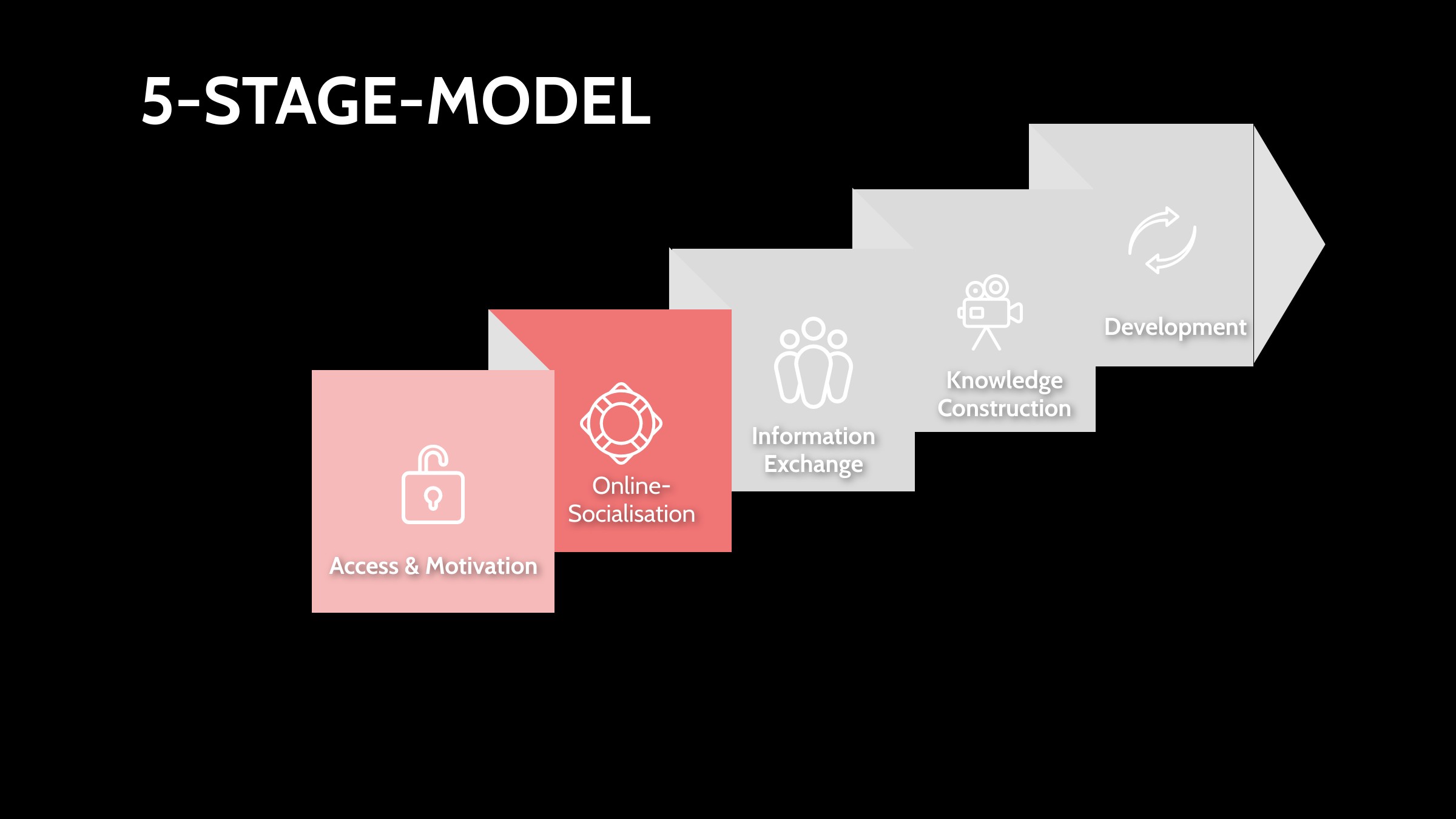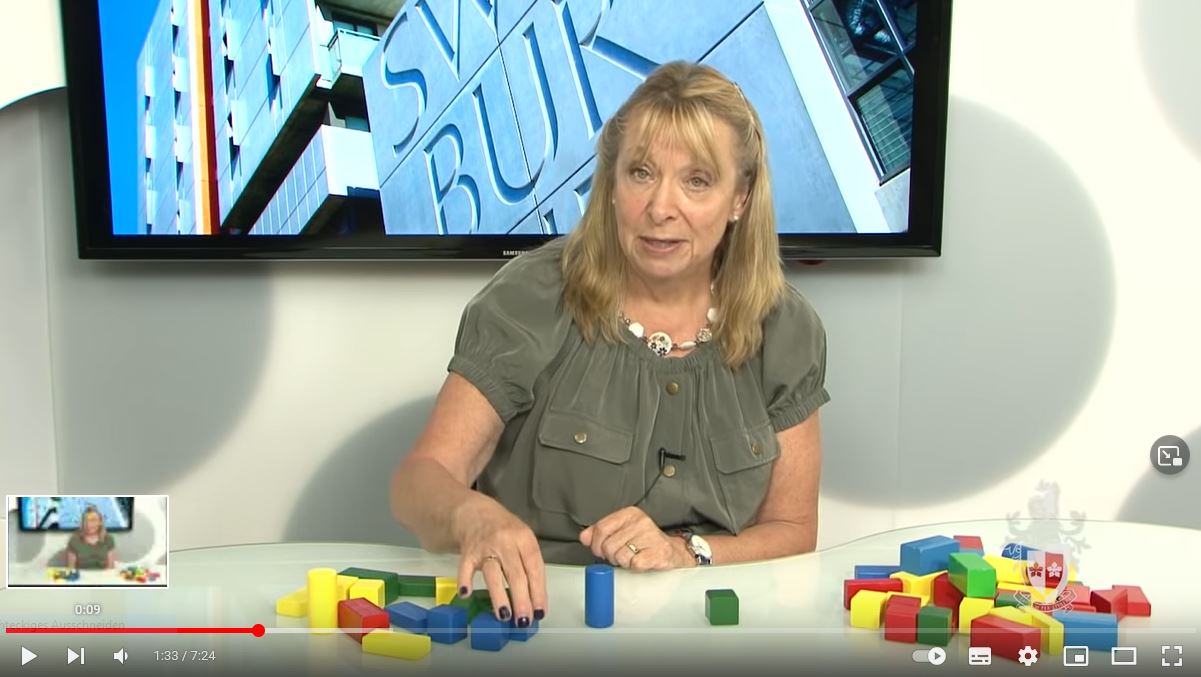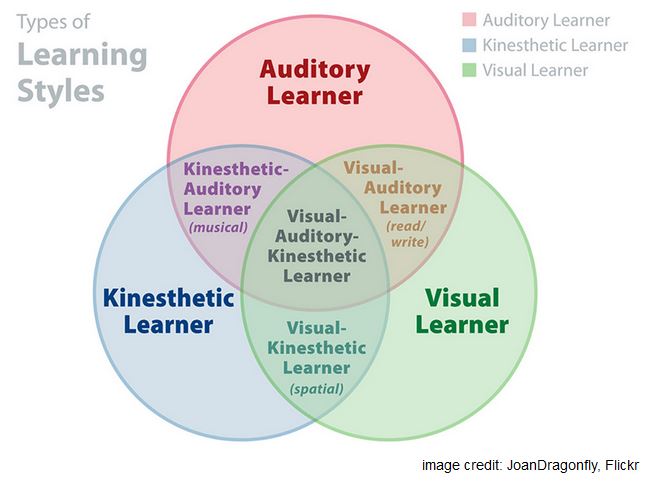Stage 2 - Familiarise your Students

Introduction
In this second stage, your students start to develop their "online identity". In this phase, the social contacts between learners and teachers are brought together. This can involve discussions, role-playing or some initial collaborative writing tasks. The purpose of this second phase will be to teach the students about the collaborative value of working together online and to enable them to cooperate. Your students should have the opportunity to get to know each other better through practical exercises so that a basis of trust can be created for the intended collaboration. To this effect, a set of rules for working together needs to be developed. Among other things, this includes rules for commitment, punctuality and feedback.
It is always a pleasure to listen to Gilly Salmon. In this video Scaffolding for Learning Professor Gilly Salmon describes and demonstrates the 5-stage model to design online classes. Salmon speaks about the role of an e-moderator as host of a „cocktail party “. She shows that the model has 5 levels with 15 components to enable you to design for your students that successfully stick with it to the end of the process.
How to make the difference between digital visitors and residents
We are sure that you have heard about digital natives and digital dinosaurs. These terms are described in the article Digital natives, immigrants and dinosaurs – which are you?
But have you ever heard about digital visitor and residents?
David White (Head of Digital Education and Academic Practice UAL Online London) talks on Youtube about the "Visitors and Residents model", which provides a framework to understand individuals' engagement in the online world based on motivation and context. The metaphor of visitors and residents is an idea to describe the range of ways individuals can engage with the internet. White outlines that some people start courses hesitantly, preferring to follow the contributions of others before gaining the courage to engage themselves.
What to do with so-called troublemakers?
We all prefer non-disruptive communication. What do you do with so-called troublemakers? If there occur any further problems read this article How to deal with troublesome students in an online class?
It is on the general idea of online community management where you will find tips to help navigate student behaviour in the virtual drama classroom and deal with distractions as best as possible. This includes rules like:
- Know when to draw the lines
- Keep your community rules and guidelines visible
- Enable peer-to-peer moderation.
- Lead by example to provide a sense of purpose
- How to ban the most troublesome users
- Improve Your Online Community Moderation with Disciple
- Enforce Community Guidelines with Disciple Moderation Features
In contrast to disruptors, there are also those who never take part online, or only as often as necessary. This behaviour is called "lurking" or "invisible student". This does not necessarily mean that they learn less or worse. They are just quieter. Conversely, some who tend to be more reserved when they are present now feel more secure on an online platform and become more talkative. This is due to the asynchronous and text-based nature, which makes it possible to create a considered contribution in peace and quiet.
To limit disruptions in advance, you may sign contracts with your students at the start of your classes. For this, read the next section...
How do you make connectivity with contract learning
Preventive intervention can be a good strategy to overcome any learning difficulties that your students may be facing:
- Set up target agreements with your students at the beginning of the course.
- Plan a "warm up" phase at the beginning of the course to allow your participants to become familiar with the new form of learning.
- Provide your students with a clear set of suggestions on how to organise their learning.
- Structure your course units in such a way that you build in "feedback loops", e.g., through reflection exercises, feedback rounds, documentation of the processing status, checklists.
- Supply questionnaires for self-assessment of learning habits.
- Work with learning contracts (contract learning).
With so-called contract learning, you can insist upon the commitment of active participation from your students. This can be easily set up in the first two stages of the online socialisation model.
This is about ...
- binding learning contracts that you can conclude with yourstudents, e.g., your online/offline times and rules and obligations for your students (and you!) or
- self-assessment sheets on the prior knowledge of your students or
- self-commitments that your students make to document their own learning or course success.
Background:
Learning contracts are personalised contracts. They can be given to your students in the form of a self-assessment sheet. However, they can also be completed on a voluntary basis by the participants with themselves. In this case, your students identify their own learning needs, specify the goals they want to achieve, the support they like (from you!) and the criteria they would like to use to monitor their learning. The idea is that your students take responsibility for their learning process.
The following framework Self-Directed Learning: Learning Contracts shows you possibilities of the student's point of view on a learning contract:
- What goals do your students want to achieve?
- What action steps do your students take to achieve these goals?
- What resources have your students, e.g., who and what can support your students in realising them?
- Which indicators do your students choose to check the goals?
- At what point in time do your students want to have achieved which goal?
How to deal with different types of learners in your online class
In the first stage of the five-stage model, you have managed the access for your students. All students experience differently.
Which learning type would be most benefitted using technology in your own course?
We love this question to think about it.
Now it's time to move on to the next step: Making your students feel comfortable with the technology and developing media competence. Professor Diana Laurillard, Chair of Learning with Digital Technologies of University College London explains six learning types:
Acquisitio: Learning through acquisition is what learners are doing when they are listening to a lecture or podcast, reading from books or websites, and watching demos or videos (the teacher controls the narrative of learning).
Inquiry: Learning through investigation/inquiry guides the learner to explore, compare and critique the texts, documents and resources that reflect the concepts and ideas being taught (learner in control of his own learning, and skills development. They navigate through the resources themselves. No intrinsic feedback from the resources, student cannot tell if their learning is improving. The essence of inquiry learning is that the learner develops their knowledge and understanding through activities that are as close as possible to the authentic practice of the discipline.
Collaboration: Learning through collaboration embraces mainly discussion, practice, and production. Building on investigations and acquisition is about taking part in knowledge building itself. Collaboration is tougher than discussion because of the need to produce something together – “the externalized fruit of the negotiated discussion”. It is about taking part in knowledge building itself through participation not acquisition. Participation and negotiation with peers. The fact that the students have to agree drives iteration.
Discussion: Learning through discussion requires the learner to articulate their ideas and questions, and to challenge and respond to the ideas and questions from the teacher, and/or from their peers. The pedagogic focus is the value of reciprocal critique of ideas and how this leads to the development if a more conceptual understanding.
Practice: Learning through practice enables the learner to adapt their actions to the task goal and use the feedback to improve their next action. Mostly done on an individual basis it is an essential part of the learning process. Feedback may come from self-reflection, from peers, from the teacher, or from the activity itself, if it shows them how to improve the result of their action in relation to the goal.
Production: Learning through production is one way you can motivate your students to combine what they have learned by articulating their current conceptual understanding and how they used it in practice. “
The page 4 Types of Learning Styles shows a closer look at visual, auditory, kinesthetic and reading/writing learners. You can offer your students this Comprehensive Guide on Different Learning Styles to figure out their own style.
How to find a common rhythm in your online classroom
One of the most common fears about online learning is that it can feel impersonal and inaccessible. To build up a cozy virtual space, you might want to find a mutual rhythm: Establishing a common language and pace of speech; explaining structure and processes; using emotionality and (reduced) body language; inviting interactivity and participation; recognising and addressing difficulties. Self-developed or nominated group rules also form the frame and the limit of the space, to which the group and the individual can and should always refer. A sense of security and familiarity needs to be developed. It forms the basis for the participants' dynamics. In the article Creating an Inclusive Virtual Classroom you read more about overcoming impersonality and building vibrant online classrooms.
To help your students get started, mind maps could be important tools and can be used in a variety of ways. For example, students could create mind maps to support their learning processes. Especially for creative classes, such as film and art, mind maps can help students learn in a visual and creative way by visualising information in formats that are compatible with their preferred learning styles. See this page with Best Mind Mapping Tools for Teachers.

Now you are familiar with the platform, your structure and so now to get the most out of your students. It is time to get them interacting with each other, because that is where the magic happens in learning. You might find it intimidating speaking up, but be brave and throw yourself into this part of the project and let your personality shine at STAGE 3 - INFORMATION EXCHANGE.


